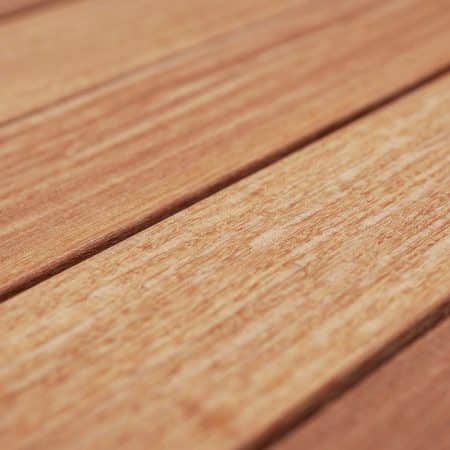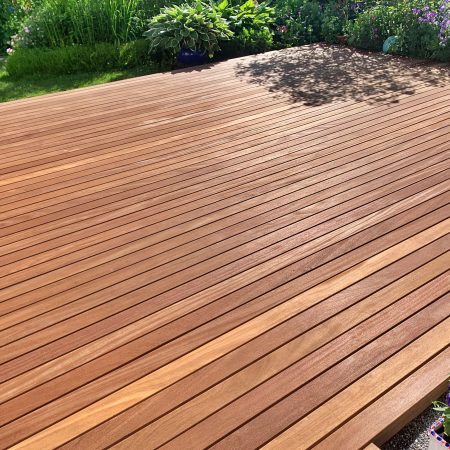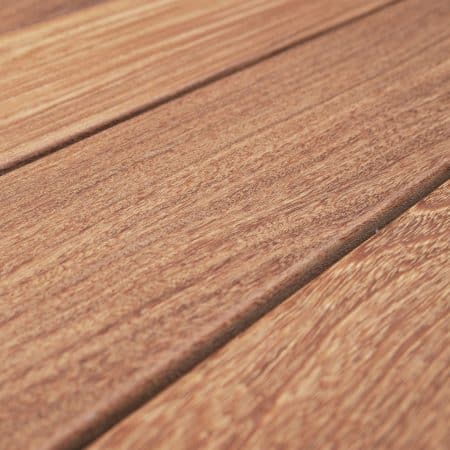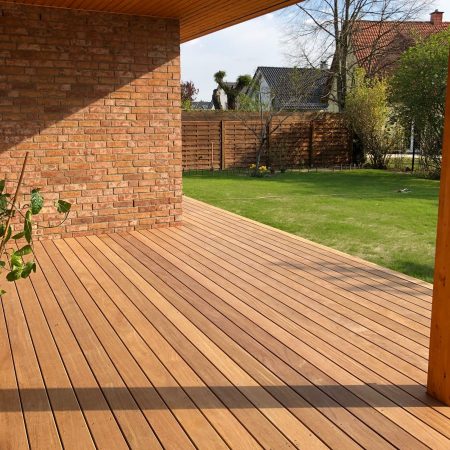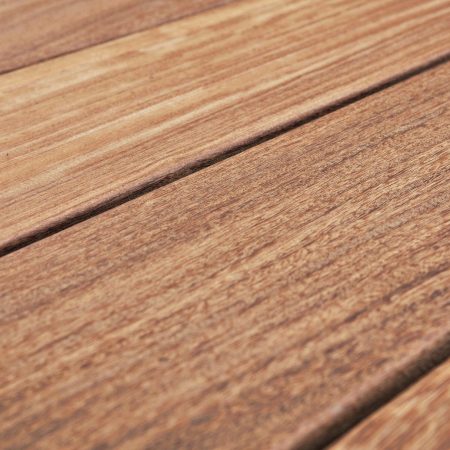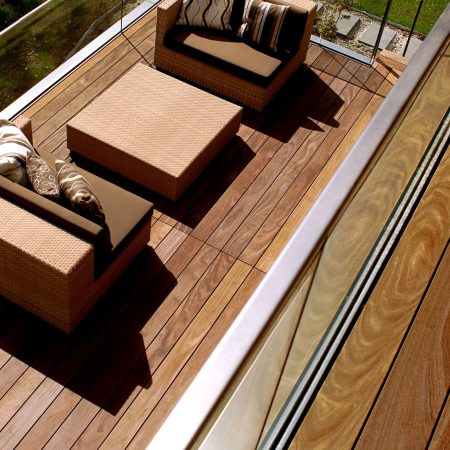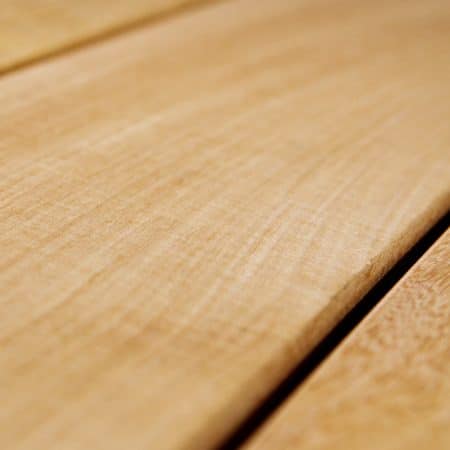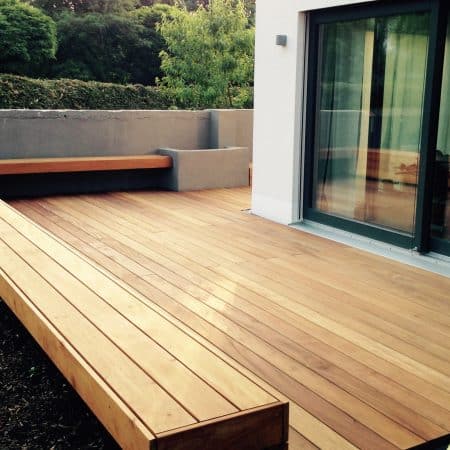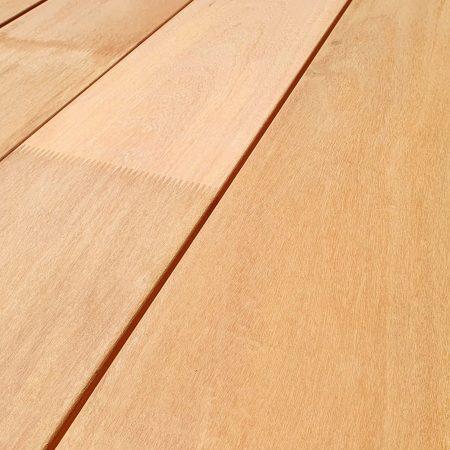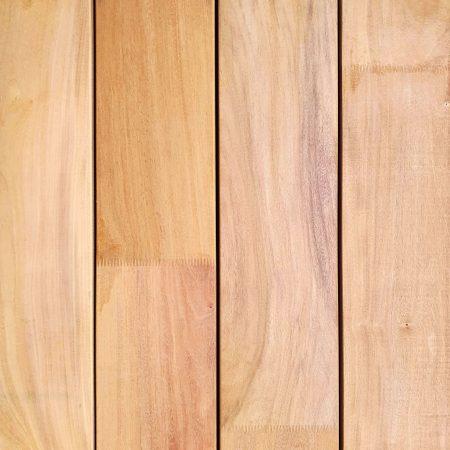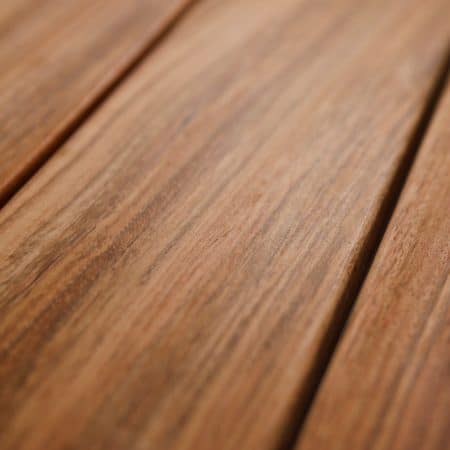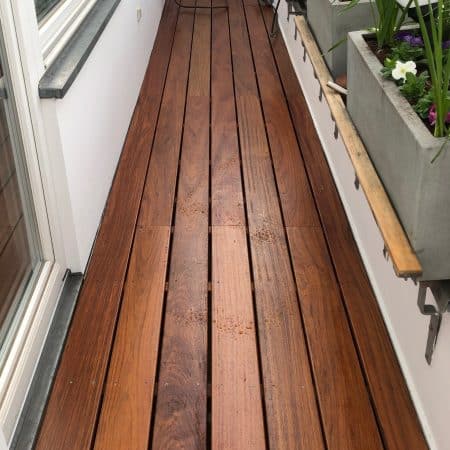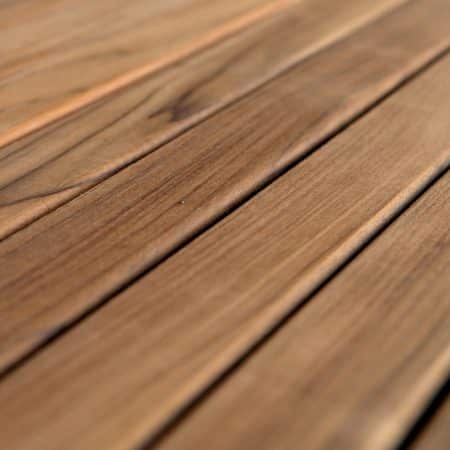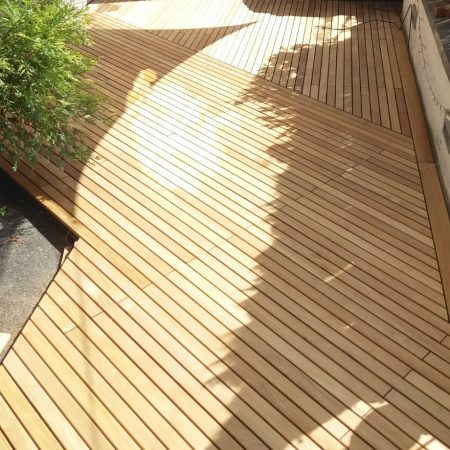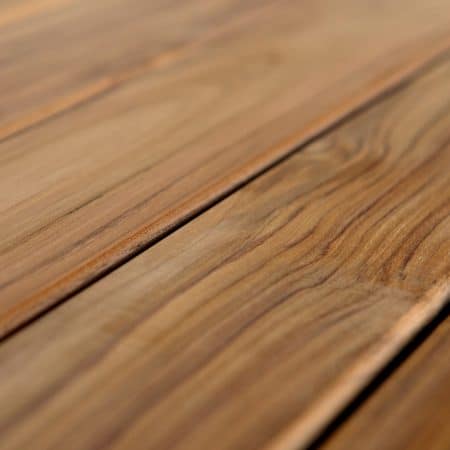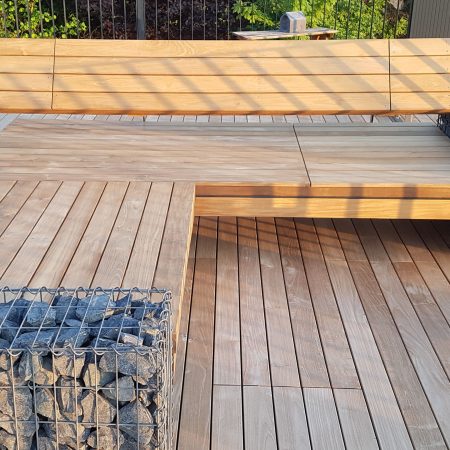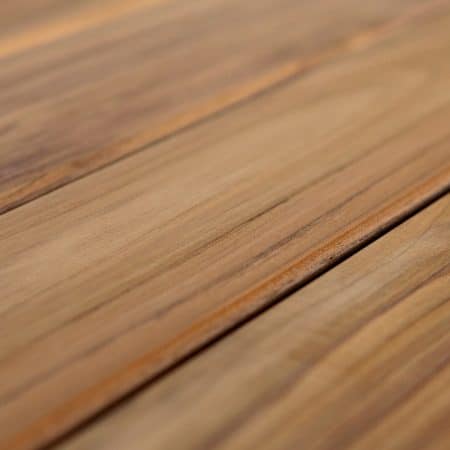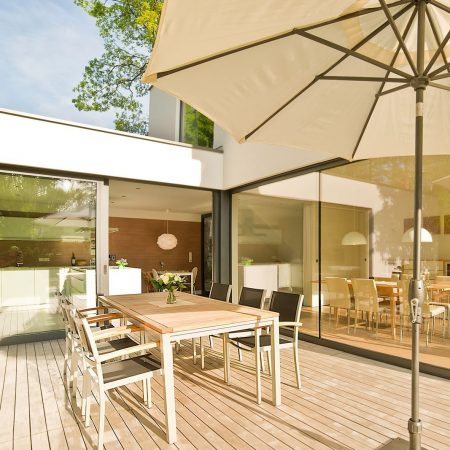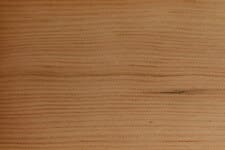
| Origin |
West Coast North America, recent plantings in Europe |
|
bulk density |
0,5 g / cm³ |
|
durability class |
3-4 |
|
radial shrinkage |
0,4% |
|
Tangential shrinkage |
1,2% |
|
wood color |
pink to light yellow |
|
wood structure |
Straight-grained softwood |
|
Usage |
Door and window construction, terrace wood |
The Douglas fir (Pseudotsuga menziesii), also known as Oregon pine, red fir or yellow fir, is one of the most important tree species in North America for producing lumber. Due to its excellent growth characteristics, Douglas fir was also planted in Germany at the end of the 19th century and today has a forest area share of around 1,7%. Outside the natural range, cultivated Douglas firs often have a high proportion of juvenile wood with wide annual rings and many knots, which significantly influences their wood properties compared to fine-grained wood from North America. Douglas firs are part of the pine family and were named after the Scottish botanist David Douglas, who introduced them to Europe in 1827. In Germany, the Douglas fir is the tallest tree at over 60 meters.
The sapwood varies from white to yellowish gray, while the kernel is light brown to reddish brown when fresh. The growth rings vary in width depending on their origin, which influences their workability. Narrow-ringed wood is easy to work with, while wider growth rings and branches increase the risk of splits. Douglas fir has good bondability and surface treatment, but poor heartwood soakability. It is suitable for outdoor and indoor applications, but its spread is problematic as it can displace natural plant communities. Recommendations for action emphasize limited planting and joint cultivation with native trees, especially European beech, to protect biodiversity. Since Douglas firs have fewer problems with the effects of climate change than many other trees, their share of European forests is expected to increase.


